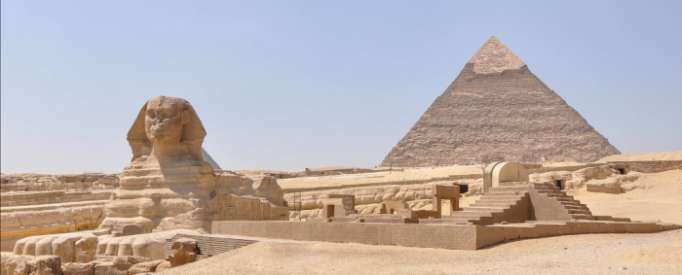The discovery was made in 2016, as researchers from the US-based Glen Dash Research Foundation and the Ancient Egypt Research Associates (AERA) were studying the magnificent structure to better understand its original dimensions.
Way back when the pyramids were constructed 4,500 years ago, under the rule of Pharaoh Khufu, they were encased in white limestone. Over the years, this limestone outer shell was stripped away - likely for other building projects - leaving the structure we know today.
"Most of those casing stones were removed centuries ago for building material, leaving the pyramid as we see it today, without most of its original shell," Glen Dash, head of the Glen Dash Research Foundation, said at the time.
To understand what the Great Pyramid was like before this outer shell vanished, the teams set out to take measurements - a task that's much easier said than done.
The first step was to find points on the pyramid where the outer - or 'casing' - stones were likely positioned, by searching for markings and examining the base that the pyramid was built on. The team found 84 points that marked out where the original edges were.
These points were plotted on a grid so that the researchers could use a technique called linear regression to calculate the lengths of each side. They found that the sides of the pyramid were once 230.295 - 230.373 metres (755.561 - 755.817 feet) long, but the west side came in between 230.378 - 230.436 metres (755.833 - 756.024 feet) – meaning it's off by about 14.1 centimetres (5.55 inches).
While this isn't exactly a giant error, and the pyramid doesn't look all that wonky because of it, it means that someone messed up all those years ago. Having said that, the team is still baffled by how those ancient builders were able to come so close to perfection.
"The data show that the Egyptians possessed quite remarkable skills for their time," Dash said. "We can only speculate as to how the Egyptians could have laid out these lines with such precision using only the tools they had."
To construct the monuments, builders would have likely laid out the pyramid's design on some sort of grid, and applied it to the ground during construction, though the team says more research is needed to figure out how this actually worked.
"We hope to eventually figure out how the Egyptians laid out the pyramid with such precision and, in doing so, hope to learn much about the tools and technology they had at their disposal," Dash said.
More about: #Pyramid-Giza
















































